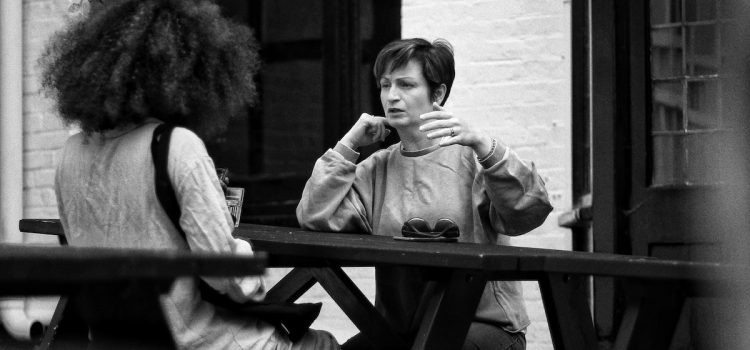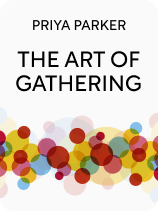

This article is an excerpt from the Shortform book guide to "The Art of Gathering" by Priya Parker. Shortform has the world's best summaries and analyses of books you should be reading.
Like this article? Sign up for a free trial here.
Do heated debates often get out of hand at parties? How do you create a safe space for discussion at any gathering?
Some people may think gatherings aren’t the right place for debates, but they actually are. In The Art of Gathering, Priya Parker says that all gatherings don’t have to be peaceful, and there’s actually a way to encourage argument without ruining the gathering.
Continue reading to learn how to create a safe space for discussion anywhere you want.
Being Peaceful Doesn’t Work
Parker says that the only way to have disagreements at a gathering is to know how to create a safe space for discussion. Parker argues that in the modern world, most of us act as if we should avoid heated disagreements. Even universities—ostensibly institutions designed to encourage argument—shy away from anything too controversial, such as by rescinding invitations to speakers who draw student protests.
However, Parker warns that prioritizing peace above all else can sometimes backfire and undermine your reason for gathering. Certain gatherings require that long-simmering tensions be brought out into the open and worked through—whether that’s because the gathering is about a controversial topic or because the group’s work outside the gathering is being hampered by these tensions. For example, you might hold a debate about gun control, or you might have educators who need to create a curriculum but are debating what kind of ideas they want to teach their students. If you avoid this requirement, you won’t effectively discuss or work through any of these issues—and they’ll continue to sow disharmony.
| How Peace Harms Universities Several university students and professors agree with Parker that prioritizing peace undermines their reason for gathering at the university. Universities are designed to encourage the free exchange of ideas. However, in classes about controversial topics, students sometimes refuse to share their opinions because they fear that doing so will result in a lower grade. Outside the classroom, students and professors self-censor due to fear of backlash on social media and in real life: One professor who expressed an unpopular viewpoint had his office door vandalized. While some argue that students and professors could simply get over these fears and share anyway, some argue that universities should implement policies that encourage greater sharing—such as by refusing to cancel controversial speakers. These recommendations support Parker’s contention that sometimes, prioritizing peace isn’t the way to go. |
If you’re intrigued by the idea of encouraging disagreement at your gathering, you’ll first need to decide whether doing so will be helpful. Pre-gathering, identify potential areas of disagreement by asking probing questions of the participants (including yourself). As a group, what are you afraid to talk about? What do people get defensive about, and why? Then, weigh the potential pros and cons of addressing these issues—and only proceed if you feel that the potential pros outweigh the cons.
(Shortform note: When deciding whether to encourage disagreement, you may wish to consider the age of the people at your gathering. In The Coddling of the American Mind, Greg Lukianoff and Jonathan Haidt argue that college-age students are particularly avoidant of disagreement: They grew up in environments (like schools) that sheltered them from opinions they didn’t agree with, so they’re uncomfortable with adversity to the point that they sometimes conflate emotional discomfort with trauma. So even if both a younger and an older person are defensive or afraid to talk about the same issue, the younger person may be more likely to deem the conversation traumatic—amplifying the potential cons of disagreement.)
If you choose to proceed, create a safe space: Try to make participants as comfortable as possible dealing with an uncomfortable topic. Parker suggests that you ask the participants to create guidelines for the discussion by asking them, “How can we help you feel comfortable taking a chance during our discussion today?” Jointly creating guidelines in this manner has three benefits. First, it signals to participants that you’d like them to put themselves out there during the discussion. Second, it prompts the participants to ban undesirable behaviors they’ve resorted to in the past. Third, it encourages compliance—participants are more likely to follow guidelines that they had a hand in creating.
| Promote Listening in a Safe Space When helping participants create discussion guidelines, encourage ones that promote listening. The authors of Difficult Conversations explain that listening is a vital skill for working through tough talks: If someone doesn’t feel heard, they’ll stop listening—so making sure that they do feel heard will encourage them to continue participating in the conversation. Consider encouraging participants to listen better by suggesting that they paraphrase each other’s responses. This helps confirm that they’ve heard each other and decreases the potential for misunderstanding. Since the Difficult Conversations authors prioritize making people feel as safe as possible, they would likely warn against demanding that your participants paraphrase. Making demands could decrease their willingness to be vulnerable (because you’re not open to their ideas), lead to less compliance with the rule (because they didn’t create it), and even encourage participants to ignore each other (because you’re setting an example that bad behavior is OK). |

———End of Preview———
Like what you just read? Read the rest of the world's best book summary and analysis of Priya Parker's "The Art of Gathering" at Shortform.
Here's what you'll find in our full The Art of Gathering summary:
- How to make pre-planned gatherings more meaningful and engaging
- What to do before, during, and after any type of gathering
- Why the host should never relax during their event






